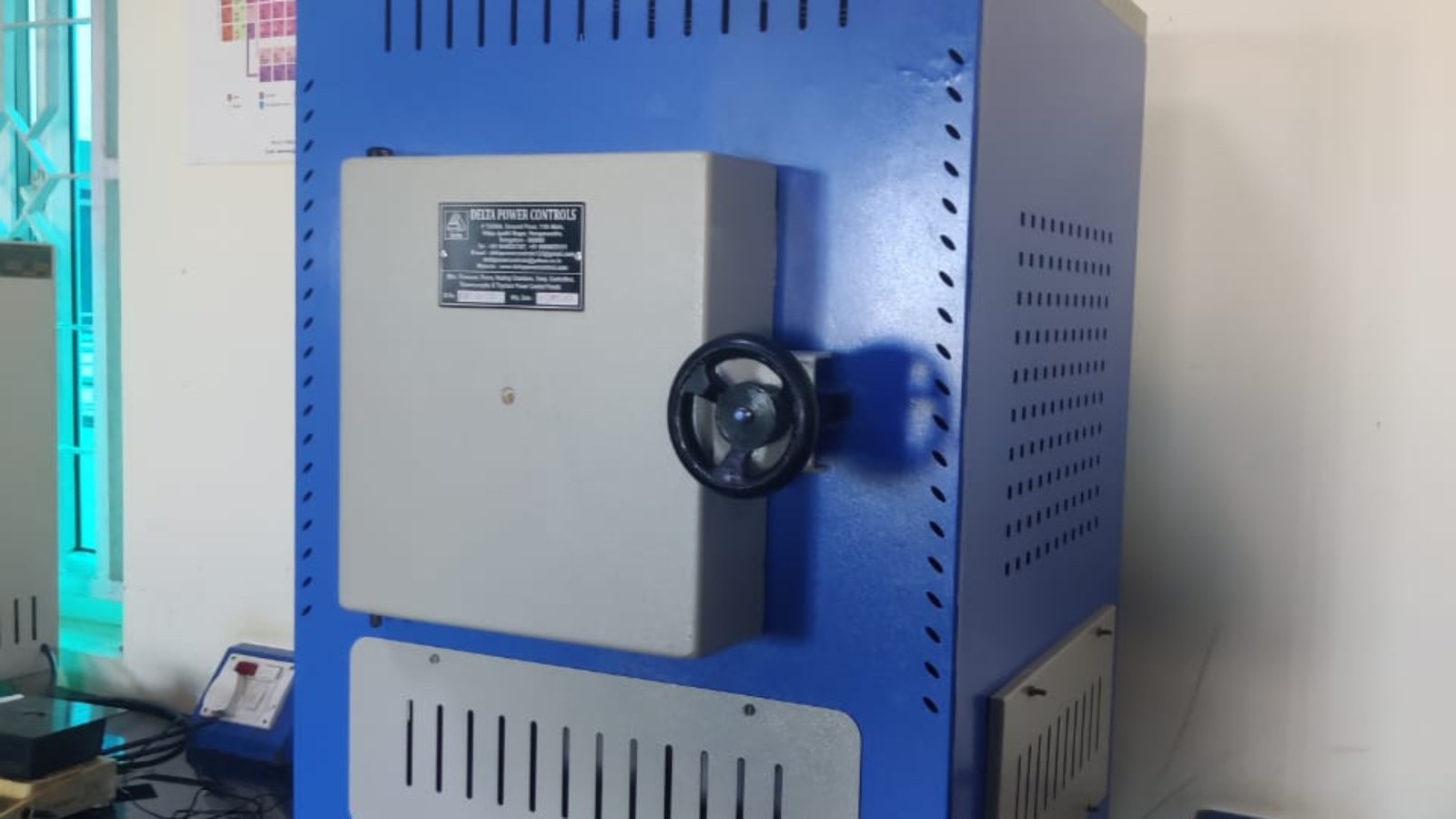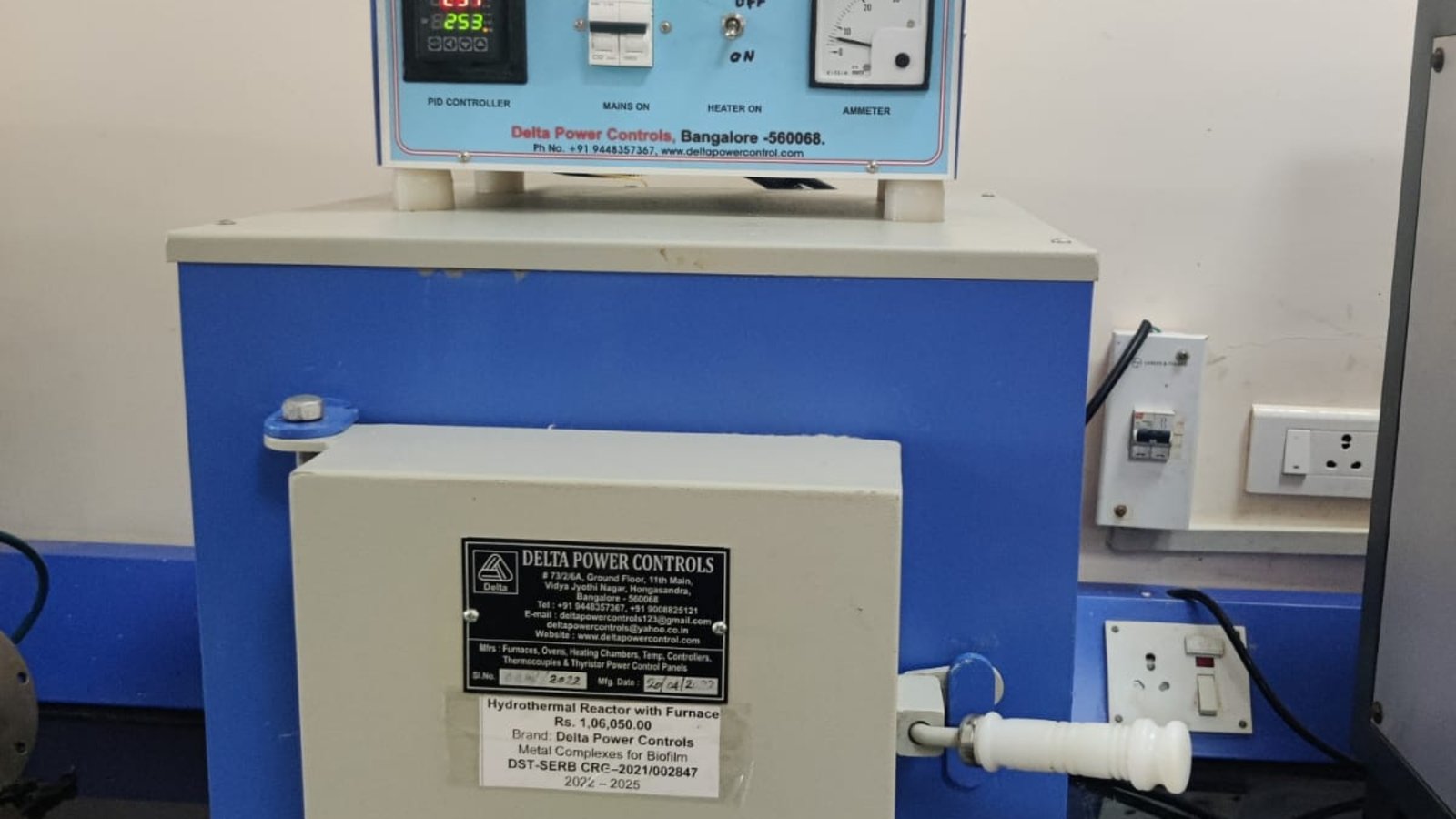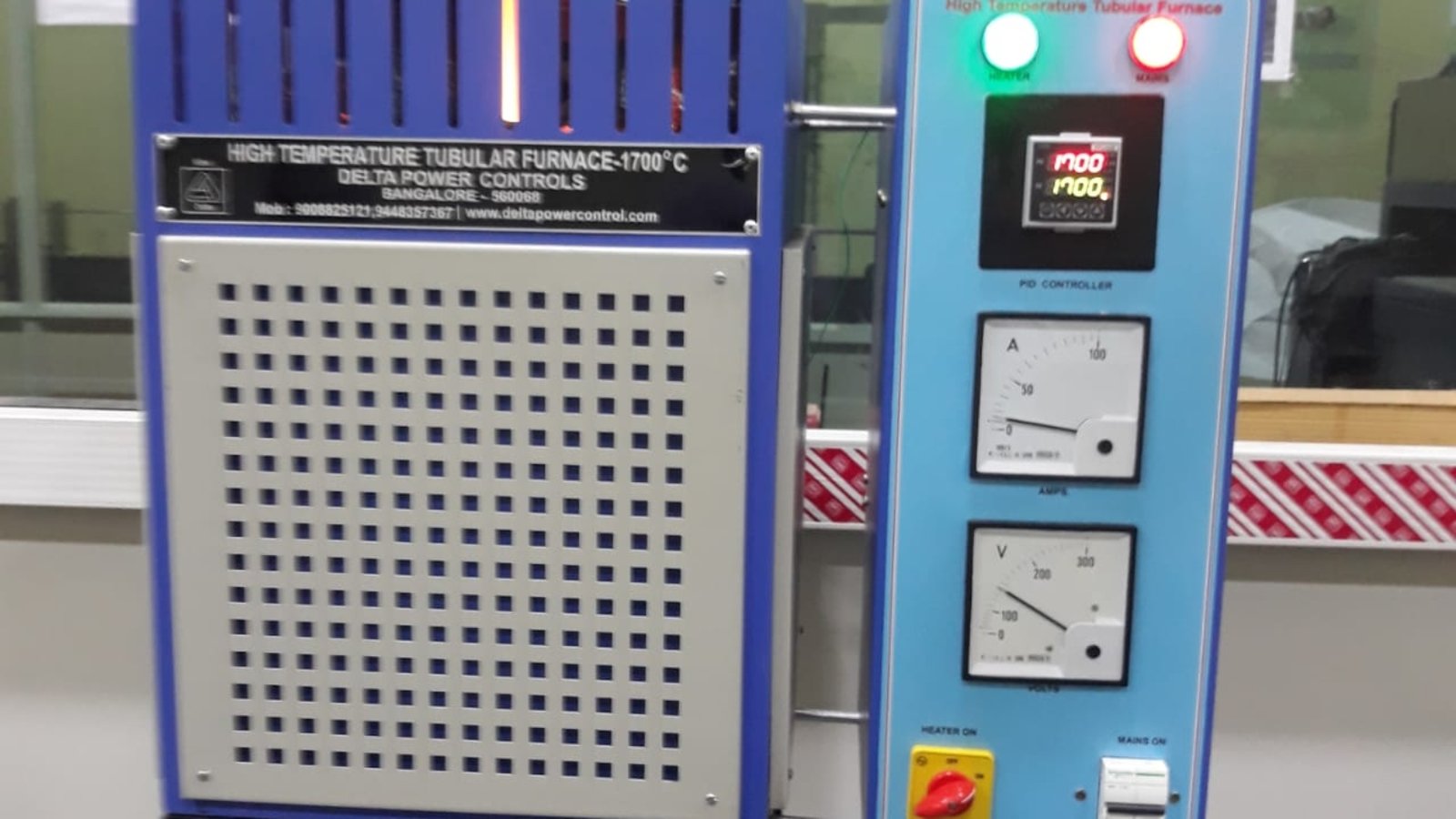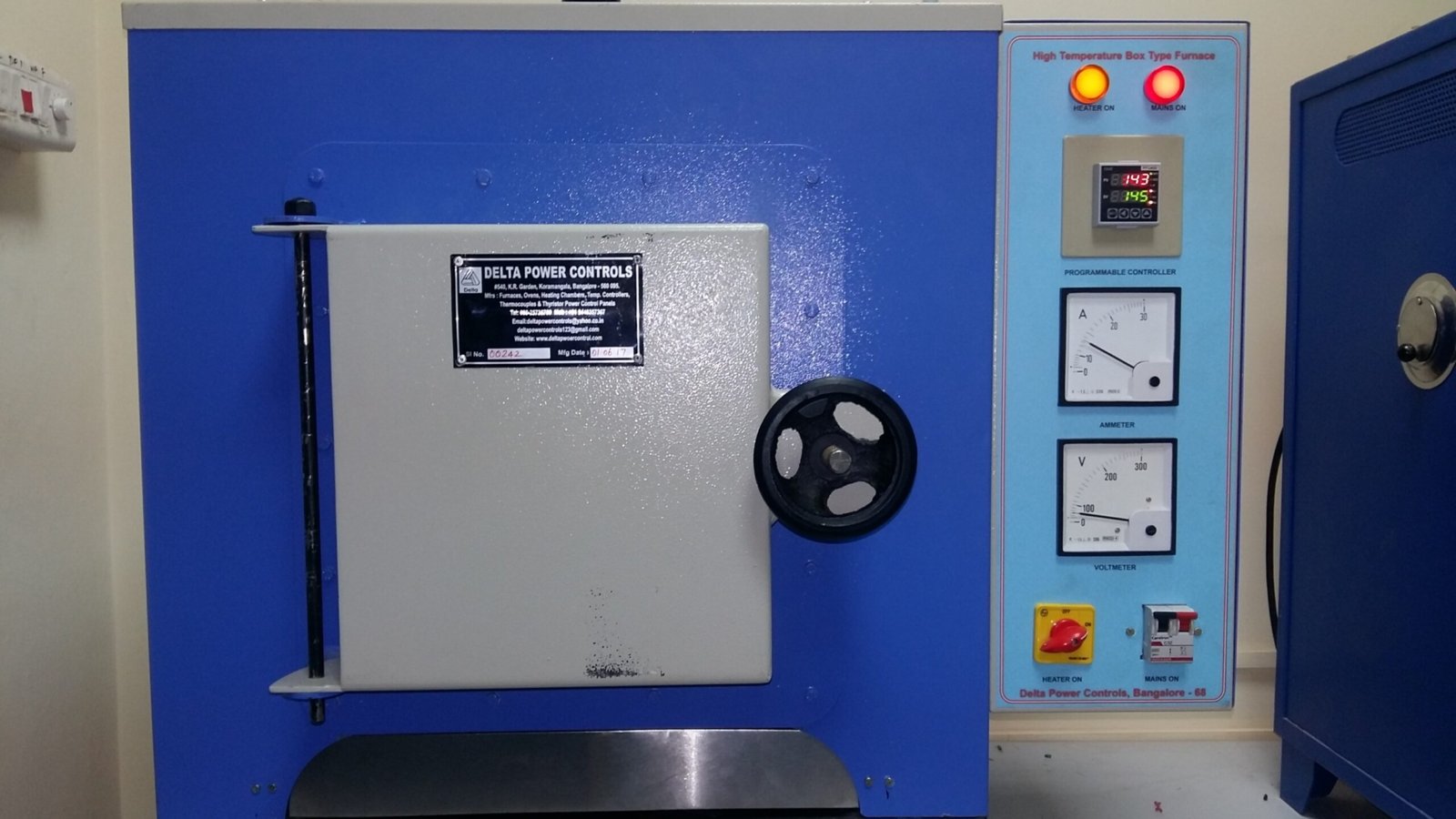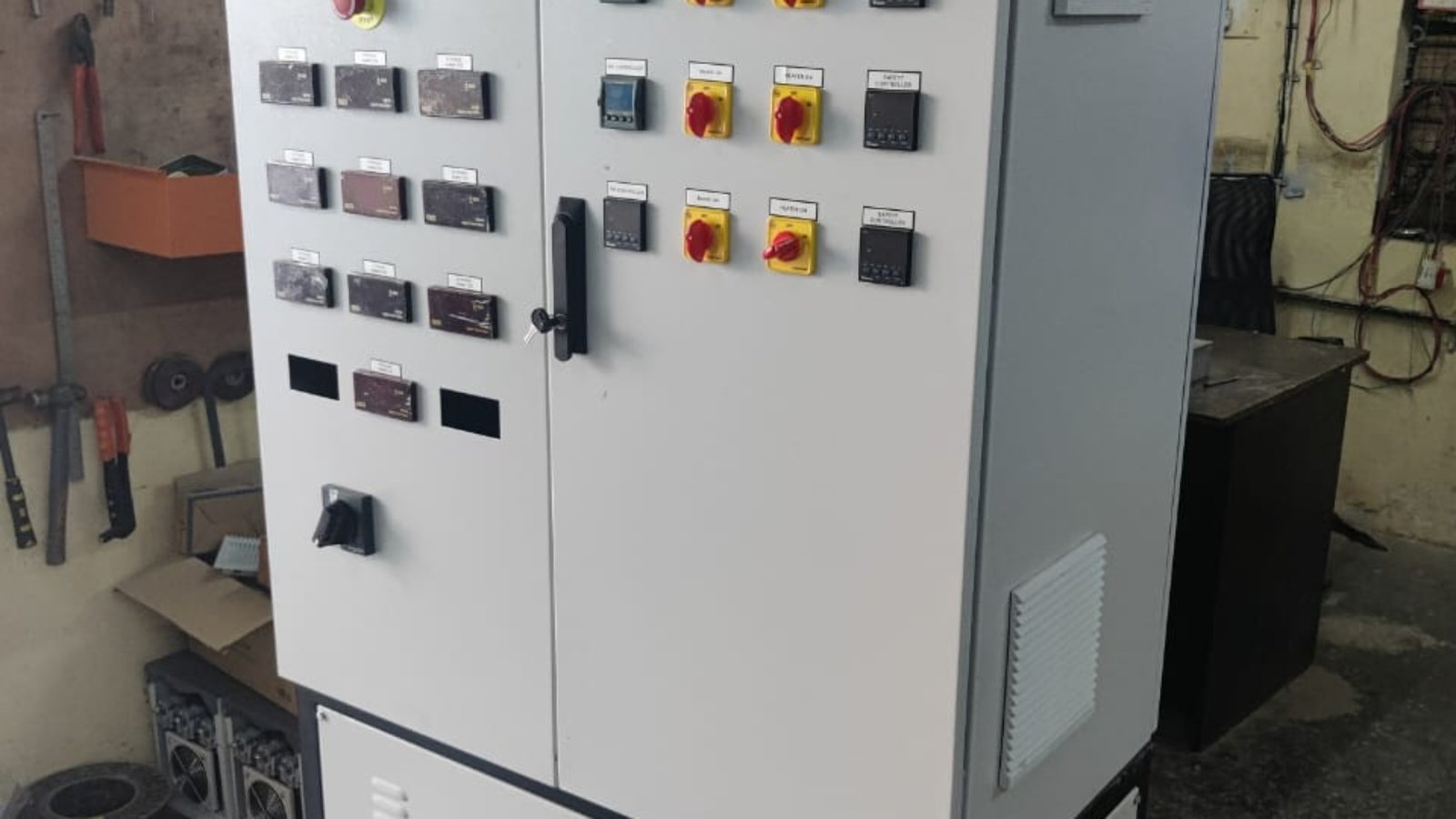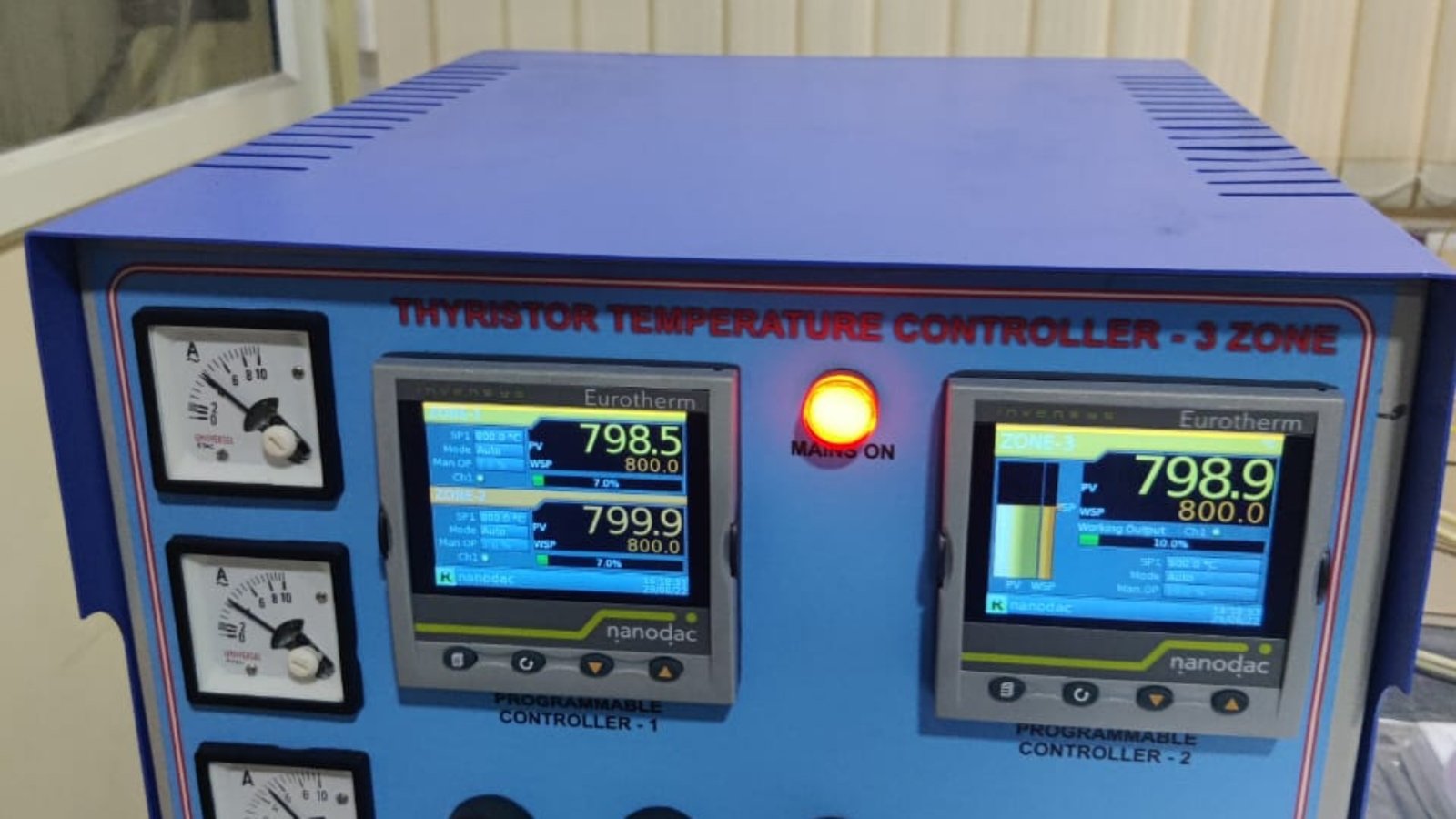6810 K nanodac 6810 THYRISTOR TEMPERATURE CONTROLLER-3 ZONE
A thyristor temperature controller is a type of electronic temperature controller that uses thyristors (also known as silicon-controlled rectifiers or SCR) to control the power supplied to heating elements in order to maintain a desired temperature.
features.
A 3-zone thyristor temperature controller is a controller that can control the temperature in three different zones, each with its own heating element and thermocouple sensor. This type of controller is often used in industrial applications where precise temperature control is required in multiple zones, such as in a furnace or oven with multiple heating elements.
The controller typically includes a user interface for setting and monitoring the temperature in each zone, as well as alarms to alert the user if the temperature exceeds a set limit. The thyristors can switch the power on and off rapidly to precisely control the temperature in each zone.
Some additional features that may be available in a 3-zone thyristor temperature controller include ramping and soaking programs, which allow the temperature to be gradually raised or lowered over time, and hold periods at specific temperatures.
6810 K nanodac 6810 THYRISTOR TEMPERATURE CONTROLLER-3 ZONE E
A thyristor temperature controller is a type of electronic temperature controller that uses thyristors (also known as silicon-controlled rectifiers or SCR) to control the power supplied to heating elements in order to maintain a desired temperature.
features.
A 3-zone thyristor temperature controller is a controller that can control the temperature in three different zones, each with its own heating element and thermocouple sensor. This type of controller is often used in industrial applications where precise temperature control is required in multiple zones, such as in a furnace or oven with multiple heating elements.
The controller typically includes a user interface for setting and monitoring the temperature in each zone, as well as alarms to alert the user if the temperature exceeds a set limit. The thyristors can switch the power on and off rapidly to precisely control the temperature in each zone.
Some additional features that may be available in a 3-zone thyristor temperature controller include ramping and soaking programs, which allow the temperature to be gradually raised or lowered over time, and hold periods at specific temperatures.
Overall, a 3-zone thyristor temperature controller is a powerful and versatile tool for controlling temperature in industrial settings where precise and reliable temperature control is required.


